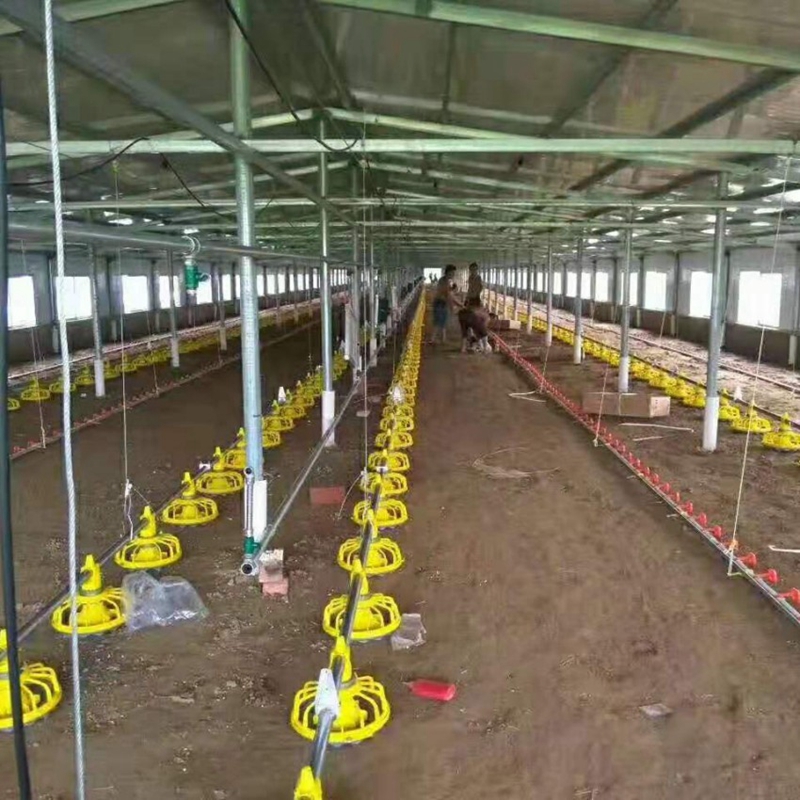hammer mill feed grinder
Oct . 30, 2024 19:00 Back to list
hammer mill feed grinder
Understanding Hammer Mill Feed Grinders
Hammer mill feed grinders are essential machines in the agricultural industry, primarily used for grinding and milling grains into finer particles. These grinders are particularly valuable for farmers and feed producers who need to prepare animal feed efficiently. This article explores the functionality, benefits, and considerations when choosing a hammer mill feed grinder.
How Hammer Mills Work
Hammer mills operate on a principle of impact grinding, where a series of hammers rotate at high speed inside a cylindrical chamber. As materials are fed into the mill, the rotating hammers strike and shatter the particles, reducing them to the desired size. The ground material then passes through a screen that controls the final particle size, ensuring uniformity in the feed.
These machines are particularly versatile, capable of grinding various materials, including corn, wheat, barley, and even fibrous crops. They are designed to handle both dry and moist grains, making them a popular choice among livestock farmers and commercial feed mills.
Benefits of Using Hammer Mill Feed Grinders
1. Efficiency Hammer mills offer rapid and efficient grinding, which can significantly reduce processing time. The high-speed operation ensures that large volumes of feed can be produced quickly.
2. Cost-Effectiveness By producing feed that is finely milled, hammer mills help improve animal feed conversion rates. Animals can digest finely ground feed more easily, which can lead to better growth rates and lower feed costs.
3. Versatility These grinders can be customized with various screen sizes and configurations, allowing users to produce a wide range of feed textures and particle sizes to meet specific dietary needs.
4. Durability Hammer mills are built for heavy use, constructed from robust materials to withstand the rigors of daily operation. With proper maintenance, they can last for years, providing excellent value for money.
hammer mill feed grinder

5. Reduced Waste By grinding feed efficiently, less material is wasted. This not only helps in maximizing resources but also contributes to more sustainable farming practices.
Considerations When Choosing a Hammer Mill
When selecting a hammer mill feed grinder, several factors should be considered
- Capacity Understanding the volume of feed that needs to be processed per hour will help in choosing the right size and model of the hammer mill.
- Power Requirement The power of the grinding machine must align with the capacity and type of material being processed. A more robust machine is necessary for harder grains or larger volumes.
- Maintenance Needs Regular maintenance is crucial for the longevity of a hammer mill. Consider models that are easy to clean and maintain to ensure optimal performance.
- Safety Features Look for grinders that incorporate safety features such as emergency shut-offs and protective casings to ensure safe operation.
Conclusion
Hammer mill feed grinders play a vital role in the agricultural sector, streamlining the process of feed production and enhancing the overall efficiency of livestock farming. With their capacity to handle different materials and produce fine feed, they are indispensable tools for modern farming operations. By understanding their functionality and carefully selecting the right model, farmers can significantly enhance their productivity and profitability.
-
Automatic Feeding Line System-Pan Feeder Nipple Drinker|Anping County Yize Metal Products Co., Ltd.
NewsJul.29,2025
-
Hot Sale 24 & 18 Door Rabbit Cages - Premium Breeding Solutions
NewsJul.25,2025
-
Automatic Feeding Line System Pan Feeder Nipple Drinker - Anping County Yize Metal Products Co., Ltd.
NewsJul.21,2025
-
Automatic Feeding Line System Pan Feeder Nipple Drinker - Anping County Yize Metal Products Co., Ltd.
NewsJul.21,2025
-
Automatic Feeding Line System - Anping Yize | Precision & Nipple
NewsJul.21,2025
-
Automatic Feeding Line System - Anping Yize | Precision & Nipple
NewsJul.21,2025






